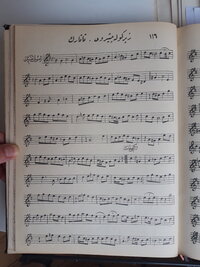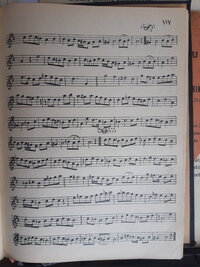- Mesajlar
- 30
- Tepki Puanı
- 64
Slowly I am working my way through the "Sazende" book, and I am trying to figure out which pieces are included, not being able to read the Ottoman script. After some looking around, this peşrev remains a mystery to me, mainly because I don't recognize the makam.
Is it Nişaburek ? The seyir seems to be different, so probably not ? And it doesn't correspond to any peşrev I can find in Nişaburek.
If any of the venerable members of this forum could shine their light on this, I would be very grateful !
Is it Nişaburek ? The seyir seems to be different, so probably not ? And it doesn't correspond to any peşrev I can find in Nişaburek.
If any of the venerable members of this forum could shine their light on this, I would be very grateful !
Bütün Ekli Dosyaları İndir
-
1.1 MB Görünüm: 257
-
1.3 MB Görünüm: 240
Son düzenleme:


